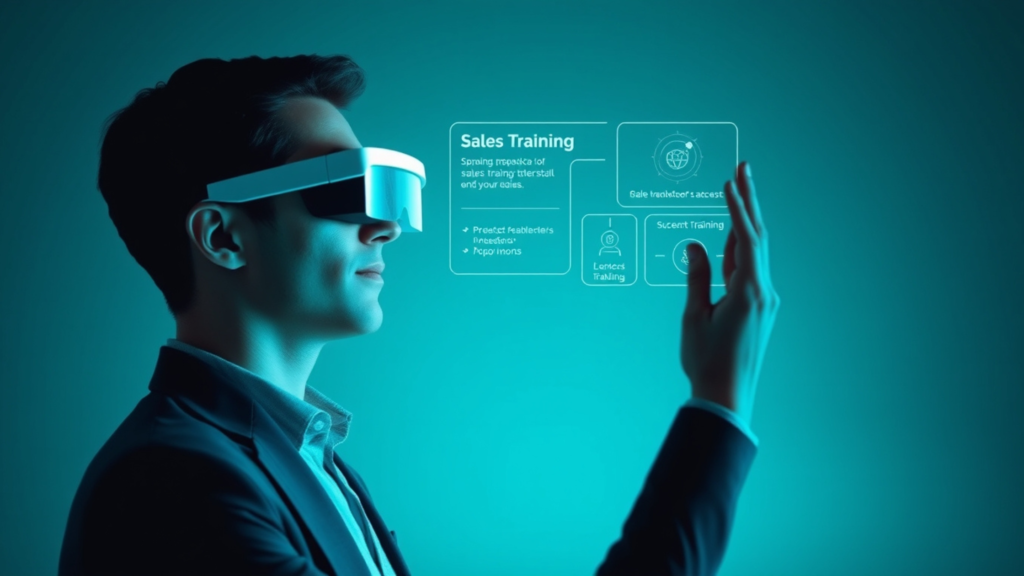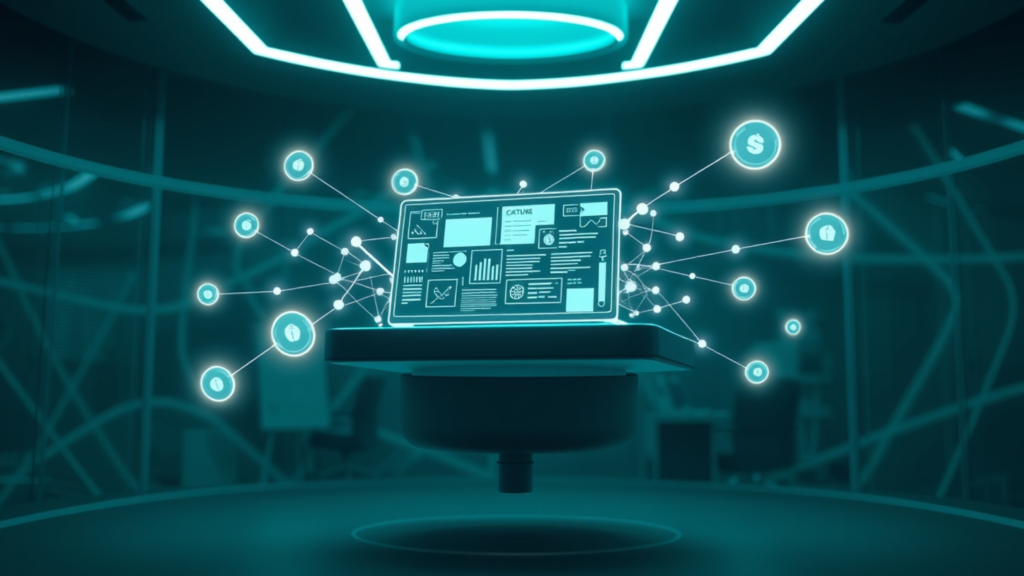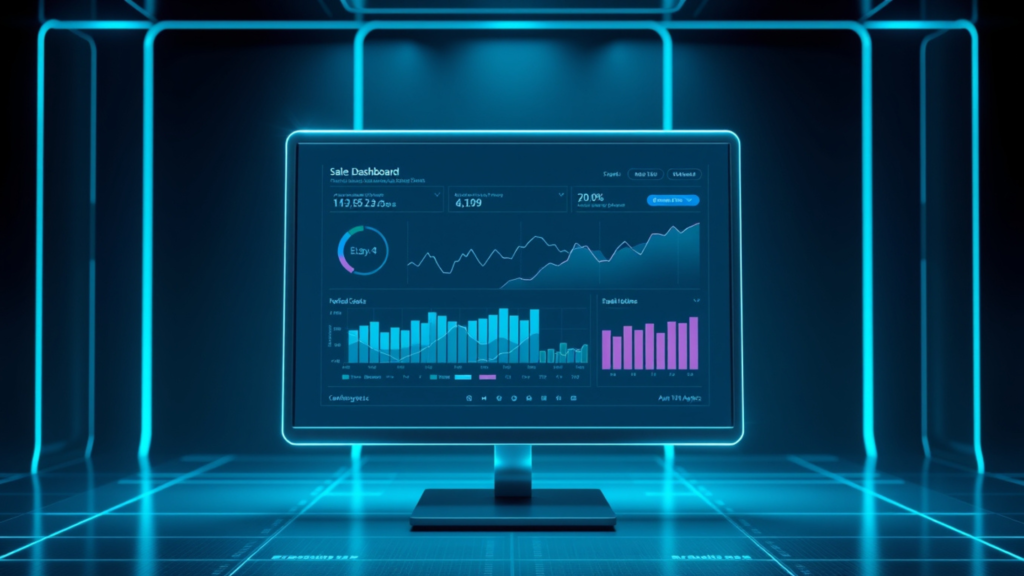5 Proven Sales Enablement Strategies to Boost Revenue in 2025

As we navigate towards 2025, the landscape of sales is rapidly evolving, fueled by technological advancements and shifts in market dynamics. Sales enablement strategies have become crucial for organizations aiming to not only keep up with these changes but to thrive.
This comprehensive guide delves into five proven strategies that can significantly enhance your revenue through effective sales enablement, positioning your organization at the forefront of innovation and success.
Embrace AI and Automation in Sales

In the digital age, Artificial Intelligence (AI) and automation are transforming sales processes, making them more efficient and effective. Here’s how they can turbocharge your sales team’s performance:
Streamline Operations with AI-Driven Automation
AI enhances operational efficiency by taking over routine tasks such as data entry, lead qualification, and scheduling. This allows sales professionals to focus on engaging more deeply with clients and closing deals. For instance, AI can:
- Automate initial customer inquiries through chatbots.
- Prioritize leads based on the likelihood to close.
- Schedule follow-ups based on customer interaction logs.
Enhance Decision-Making with Predictive Analytics
Leveraging AI for predictive analytics can significantly impact decision-making in sales. By analyzing historical data and market trends, AI tools offer valuable forecasts that guide resource allocation and strategy formulation. A real-world example is a tech firm that utilized AI to fine-tune its market entry strategy, resulting in a 30% uptick in market share within a year.
Adopt AI-Guided Selling Techniques
AI-guided selling harnesses AI to provide sales reps with real-time, data-driven insights and recommendations during customer interactions. This can include:
- Suggesting personalized product recommendations to customers.
- Offering real-time pricing optimizations based on customer profiles.
- Analyzing customer sentiment during interactions to adjust tactics.
Prioritize Personalization in Customer Interactions

As markets become more saturated, personalization has emerged as a key differentiator in customer interactions. In 2025, tailoring experiences to individual customer needs will be more critical than ever.
Utilize AI for Deep Personalization
AI’s ability to analyze extensive datasets enables a deeper understanding of customer preferences and behaviours, facilitating highly personalized engagement strategies. This approach not only enhances customer satisfaction but also boosts sales effectiveness.
Focus on Customer Retention
Shifting the focus from merely acquiring new customers to nurturing existing ones can lead to increased loyalty and repeat business. Strategies for this include:
- Creating personalized loyalty programs.
- Offering tailored discounts based on customer purchase history.
- Engaging customers through personalized communications.
Implement Advanced Personalization Tools
Investing in advanced tools that offer robust data analytics and customer relationship management capabilities can empower sales teams to craft customized solutions that resonate with individual customers, thereby enhancing the likelihood of successful conversions.
Foster Continuous Learning and Development

The sales environment in 2025 demands that teams remain agile and informed. Continuous learning and development are pivotal for maintaining a competitive edge.
Design Personalized Learning Paths
Offering tailored learning experiences for sales personnel ensures that each team member can develop the skills most pertinent to their roles and career aspirations. This could include:
- Modular training programs focused on specific skills.
- Regular updates on industry trends and technology advancements.
- Role-play scenarios that address real-world challenges.
Leverage Data-Driven Sales Coaching
Utilizing data to guide sales coaching can significantly enhance the effectiveness of training programs. By analyzing performance metrics, managers can provide targeted coaching to improve areas where sales personnel are struggling.
Explore AR/VR in Sales Training
Augmented Reality (AR) and Virtual Reality (VR) technologies offer immersive training experiences that are particularly effective for complex product demonstrations and simulating challenging sales scenarios, thus preparing sales teams for a wide range of customer interactions.
Optimize Content Delivery with Intelligent Systems

An effective content management strategy is crucial for delivering the right message at the right time. Intelligent content delivery systems can automate and optimize the distribution of sales materials to ensure maximum impact.
Automate Content Creation with AI
AI can assist in generating sales content, from emails to proposal documents, tailored to the preferences and needs of prospective customers. This automation ensures consistency and efficiency in content creation.
Implement a Unified Sales Enablement Platform
A centralized platform facilitates better collaboration among team members and ensures that all sales personnel have access to the latest tools and content. This integration leads to a smoother sales process and improved customer interactions.
Monitor and Adapt Content Strategies
Regularly reviewing the effectiveness of content strategies allows for timely adjustments based on what’s most effective. This adaptability can significantly enhance the impact of sales efforts.
Utilize Advanced Analytics for Performance Measurement

Robust analytics and performance measurement tools are essential for assessing the effectiveness of sales strategies and making informed improvements.
Establish Clear KPIs for Sales Enablement
Defining specific, measurable KPIs related to sales activities and outcomes helps in tracking progress and pinpointing areas for improvement. Common metrics might include conversion rates, average deal size, and customer engagement levels.
Harness the Power of Sales Analytics Tools
Advanced tools can capture a wide range of data points across the sales process, providing a comprehensive view of performance and highlighting opportunities for optimization.
Incorporate Feedback Loops for Continuous Improvement
Gathering and acting on feedback from sales teams and customers is crucial for refining strategies and ensuring resources are effectively aligned with market needs.
Why Saletancy is Your Best Sales Enablement Partner
Choosing the right partner for your sales enablement needs is crucial. Saletancy stands out as a top choice for several compelling reasons. Here’s why Saletancy should be your go-to for enhancing your sales processes:

- Experienced Professionals: Saletancy’s team is composed of seasoned experts who bring a wealth of knowledge and experience in sales enablement. Their hands-on approach ensures that they understand the unique challenges and needs of your business.
- Customized Solutions: They recognize that every business is different. Saletancy offers tailored solutions that are specifically designed to align with your company’s objectives and market demands. This personalized approach guarantees more effective results.
- Comprehensive Services: From initial strategy development to training and implementation, Saletancy provides a full range of services to cover all aspects of sales enablement. This means you can rely on a single provider for all your needs, simplifying the process and ensuring consistency.
- Proven Track Record: With a history of successful partnerships across various industries, Saletancy has proven its capability to enhance sales performance. Their case studies and testimonials from satisfied clients attest to their effectiveness and commitment to client success.
- Technology-Driven Strategies: Utilizing the latest technologies and tools, Saletancy ensures your sales strategies are up-to-date and competitive. This includes AI-driven analytics, CRM solutions, and cutting-edge training platforms that keep your team ahead of the curve.
- Ongoing Support and Training: Saletancy believes in not just setting up strategies but also ensuring they work continuously over time. They provide ongoing support and training to your sales team, helping them adapt to new tools and strategies effectively.
Choosing Saletancy means partnering with a firm that genuinely cares about driving your sales forward. With their expert team, tailored solutions, and robust support system, they equip your business to meet the evolving demands of the marketplace and achieve sustained success.
Connect with Saletancy today and start transforming your sales!
Conclusion
Adopting these five sales enablement strategies will not only boost your revenue in 2025 but also position your organization as a leader in an increasingly competitive market.
By continuously adapting to technological advancements and evolving market conditions and by leveraging data-driven insights to refine your strategies, you can ensure sustained sales success. Engage with these practices today to build a robust foundation for future growth.
FAQs
What is a sales enablement strategist?
A sales enablement strategist is a professional who designs and implements strategies to improve the sales process. Their goal is to ensure sales teams have the tools, content, training, and technology needed to enhance their performance. This role involves analyzing sales practices, coordinating with marketing and sales teams, and deploying sales enablement solutions that help achieve business objectives.
What is the sales enablement process?
The sales enablement process involves systematic steps to provide sales teams with the resources they need to engage effectively with buyers. This process includes the identification of necessary tools, creation and management of sales content, training and coaching sales teams, and measuring the effectiveness of sales activities. The aim is to ensure that salespeople are equipped to maximize every customer interaction.
What are the goals of sales enablement?
The primary goals of sales enablement are to increase sales effectiveness, reduce the sales cycle length, and improve the productivity of sales teams. This is achieved by providing sales personnel with strategic tools and information, streamlined training programs, and robust support that enhances their ability to close deals and foster customer relationships.
What is the RACI matrix for sales enablement?
The RACI matrix for sales enablement is a responsibility assignment chart that delineates the roles and responsibilities of individuals within an organization in relation to sales enablement activities. RACI stands for Responsible, Accountable, Consulted, and Informed. It helps clarify who is responsible for performing specific tasks, who is accountable for the outcomes, who should be consulted during the process, and who must be kept informed.
How to create a sales enablement plan?
Creating a sales enablement plan involves several steps:
- Assess Sales Needs: Analyze the current sales process and identify areas for improvement.
- Define Objectives: Set clear, measurable goals based on the needs assessment.
- Develop Resources: Create or curate content, tools, and training programs that support the sales process.
- Implement Technology: Choose and implement technology solutions that facilitate effective sales enablement.
- Train and Support: Provide ongoing training and support to sales teams.
- Measure and Optimize: Regularly evaluate the impact of sales enablement initiatives and make necessary adjustments.
How to measure sales enablement?
Sales enablement can be measured by analyzing several key performance indicators (KPIs), including sales cycle length, win rate, quota attainment, and lead conversion rates. Additionally, assessing the usage and effectiveness of sales content and tools, as well as feedback from sales teams and customers, provides insights into the impact of sales enablement strategies.
What is a sales enablement framework?
A sales enablement framework is a structured approach to identifying, developing, and implementing tools and processes that support sales teams. It typically includes components like strategy development, content management, training and coaching, performance analysis, and technology integration. This framework ensures that all sales enablement efforts are aligned with the company’s business goals and sales objectives.
What is the future of sales enablement?
The future of sales enablement lies in increasingly personalized and technology-driven strategies. Advances in AI and machine learning are expected to revolutionize how sales content is created and delivered, how sales interactions are analyzed, and how training is tailored to individual sales reps. The focus will continue to shift towards more strategic, data-driven approaches that enhance the effectiveness of sales teams.
What is the role of a sales enabler?
The role of a sales enabler is to act as a facilitator between sales, marketing, and other relevant departments to ensure that sales teams have the resources, tools, and training required to succeed. They are responsible for streamlining communication, managing sales enablement platforms, and implementing strategies that increase sales efficiency and effectiveness.
Who owns sales enablement?
Ownership of sales enablement can vary by organization but typically lies with a dedicated sales enablement team or department. In some companies, it may be a collaborative effort involving leaders from sales, marketing, and product management. The key is having a clear governance structure that defines roles and responsibilities for managing and executing sales enablement activities.
What is the mission of sales enablement?
The mission of sales enablement is to empower sales teams to sell more effectively at a higher velocity. This is accomplished by providing the right tools, content, and training that align with the buyer’s journey and enhance the sales team’s ability to engage with prospects and customers effectively.
What is a SMART goal in sales?
A SMART goal in sales is a specific, measurable, achievable, relevant, and time-bound objective that guides sales activities. For example, increasing quarterly sales by 20% through the implementation of a new sales enablement platform within the next six months. SMART goals help sales teams focus their efforts and measure their success in achieving sales targets.